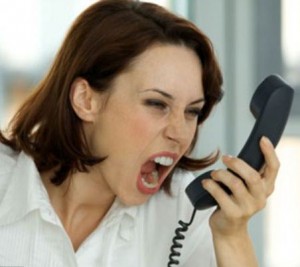Hostile Media Bias Definition
 During George W. Bush’s first presidency, conservative writers Ann Coulter and Bernard Goldberg published books accusing the U.S. mainstream media of liberal bias. Liberal writer Al Franken replied with a book that denied liberal media bias and claimed that the same news outlets had right-wing economic and editorial leanings. Contradictory media critiques are also found in international political conflicts from the Middle East to Bosnia. The hostile media bias phenomenon happens when opposed groups of political partisans judge the same nonpartisan news coverage as biased against themselves.
During George W. Bush’s first presidency, conservative writers Ann Coulter and Bernard Goldberg published books accusing the U.S. mainstream media of liberal bias. Liberal writer Al Franken replied with a book that denied liberal media bias and claimed that the same news outlets had right-wing economic and editorial leanings. Contradictory media critiques are also found in international political conflicts from the Middle East to Bosnia. The hostile media bias phenomenon happens when opposed groups of political partisans judge the same nonpartisan news coverage as biased against themselves.
Hostile Media Bias History and Modern Usage
In a typical lab study of hostile media bias, people recruited from opposing groups in an issue (e.g., the Arab-Israeli conflict) watch news coverage of that issue, then make judgments of its bias. Survey research is also used to study beliefs about media bias in general. The general finding is that each group judges the coverage to be biased against its own side and believes that it would turn neutral viewers against the group’s own cause.
Academic Writing, Editing, Proofreading, And Problem Solving Services
Get 10% OFF with 24START discount code
Many studies in social psychology, however, show that people overestimate how much public opinion supports their own view—this is called the false consensus effect. If groups overestimate their own support from the people, why do they underestimate their own support in the media?
It was first thought that group members might actually selectively remember more material that opposed their viewpoint from news coverage. However, studies measuring what people remembered did not support this. People tended to remember content that supported their own side but then judged the presentation as biased against themselves anyway. There is more support for the explanation that because partisans believe that the truth is on their side, they judge an evenhanded report as not showing the truth, therefore biased. (Consider how you might react to a documentary evenhandedly assessing Adolf Hitler’s good and bad points.)
Another well-supported explanation, though, traces hostile media perceptions to activist culture: Group members learn claims of hostile media bias and apply them to coverage they see. At the group level, this protects group members from exposure to conflicting viewpoints and leads them to rely on like-minded media outlets for news. This may make them less optimistic about popular support, because beliefs about hostile, influential media tend to undermine the false consensus effect. These explanations of hostile media bias can be applied to any situation where a third party catches flak from conflicting sides, from the United Nations to football referees.
References:
- Giner-Sorolla, R., & Chaiken, S. (1994). The causes of hostile media judgments. Journal of Experimental .Social Psychology, 30, 165-180.
- Matheson, K., & Dursun, S. (2001). Social identity precursors to the hostile media phenomenon: Partisan perceptions of coverage of the Bosnian conflict. Group Processes and Intergroup Relations, 4, 116-125.
- Vallone, R. P., Ross, L., & Lepper, M. R. (1985). The hostile media phenomenon: Biased perception and perceptions of media bias in coverage of the Beirut massacre. Journal of Personality and Social Psychology, 49, 577-585.